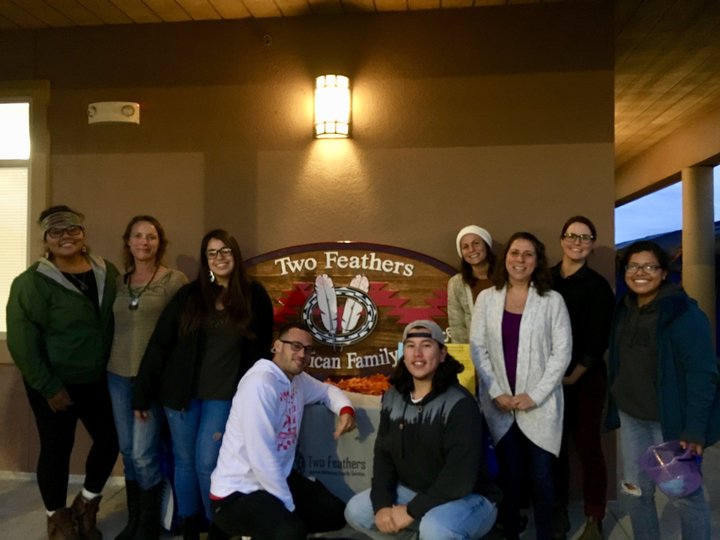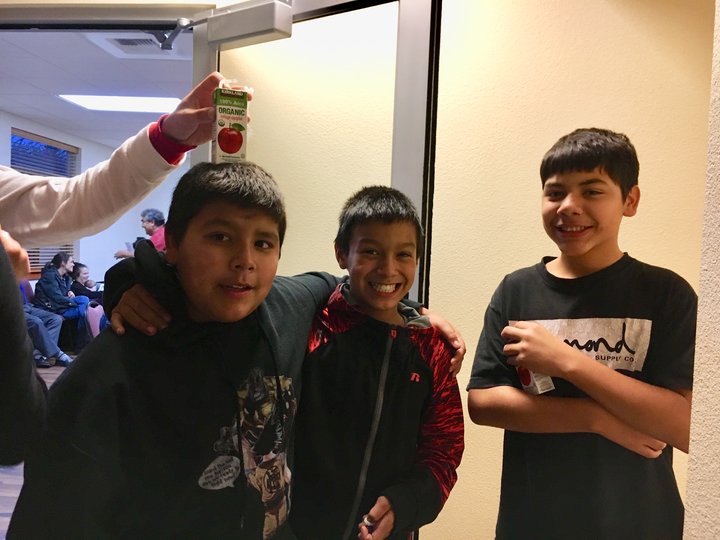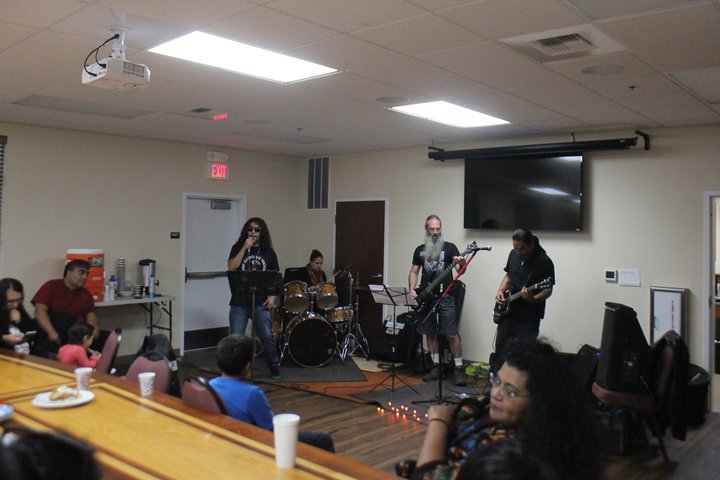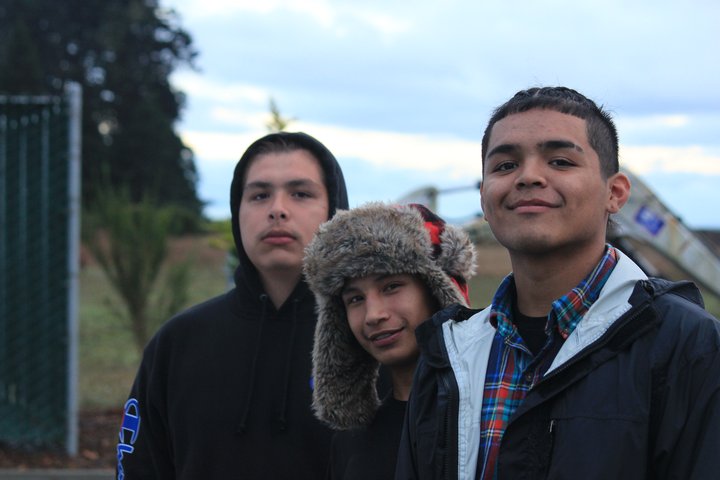
Photos by Freddy Brewster
Around 60 people gathered last night at the Two Feathers Native American Family Services center to celebrate a $3.7 million grant they received to combat teen suicide.
The grant money comes from the Garrett Lee Smith State/Tribal Youth Suicide Prevention and Early Intervention Grant and will be used to fund a five-year school-based prevention program called “Chekws: Hope for Tomorrow.”
Virgil Moorehead, Jr. is the behavioral health director at Two Feathers and said the purpose of the event was to bring awareness to the program and highlight Two Feathers as a place where native youth can come if they are in crisis.
“The idea behind the event is to reimagine mental health as a strength-based concept,” Moorehead told the Outpost. “Just gathering as a community is a tool that can be used.”

Robert Kelsey, Virgil Moorehead, Jr., Marcus Offield and Virgil Pole
Moorehead said suicide rates in Humboldt county are two to three times higher than the state average and Native American youth are often overrepresented in those number. He said the most at-risk group is males ages 14-24 and pointed to the need to highlight music, art and community interaction as a way to welcome at-risk youth into areas where they can find help.
Marcus Offield, a 16-year-old high school student at Hoopa Valley High, said events like this are important because they show the importance of the community and Native culture.
“These events are important for people my age to come together to make sure kids don’t do other things like drugs and alcohol,” Offield told the Outpost.
The Chekws: Hope for Tomorrow program will provide services through work at local schools. There will be three therapists and two support staff positions that will offer screenings and intervention, counseling, recovery support, among other services for youth ages 10-18 starting at Klamath-Trinity Joint Unified schools and Northern Humboldt Union Unified schools.

Some of the staff at Two Feathers
Blair Kreuzer, the executive director of Two Feathers, told the Outpost that last night’s event and the mission of the Chekws program fit into their values — a set that includes a focus on family and community interactions.
“With this program, we really want to reach the kids that are hardest to reach,” Kreuzer said. “We want to make things really easily accessible and we will do whatever we can to help families.”

Raymond, Santiago and Issac

The band 7th Generation Rise

CLICK TO MANAGE